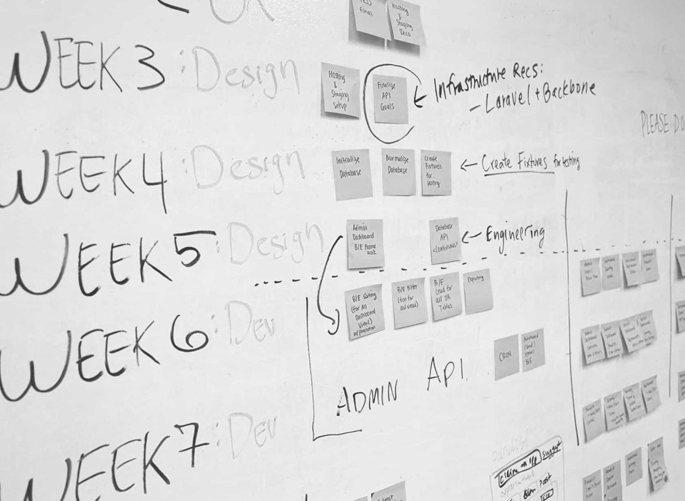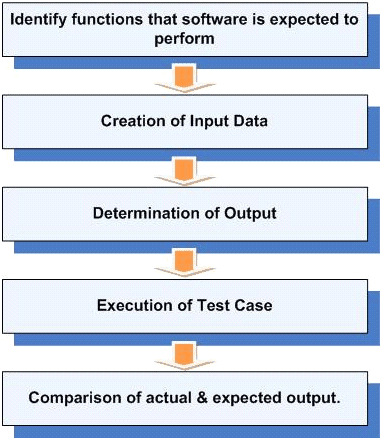MODIFIED ON: November 29, 2022 / ALIGNMINDS TECHNOLOGIES / 0 COMMENTS

Mobile application development has driven everyone into a state or period of uncontrolled excitement. As mobile phones are an important and obligatory part of daily life, 1000s of new mobile applications are released day by day both in Android and iOS. Yet only a handful will survive. It is not just the development of an application, moreover, it is a business. Let us have a brief study of the important points to remember for successful development and launching of the app.
It is always the vast idea that develops into a mobile application so each and every tiny point has to be focused on the good future of the app. As application development need to infect mobile phones all over the world, the development process has to be very systematic and should focus on various aspects. Here is the list of top 7 factors you should take care of during sustainable mobile app development.
- Methodology
- UI & User Experience
- Functionality Testing
- API Management
- Mobile Content Management
- Connectivity with Users
- Promoting and Marketing the App
1. Methodologies
In the field of sustainable mobile app development or software engineering in general, methodologies mean a framework that is used by the development team to plan, structure and control the process of developing an information system. It is a process of splitting of development procedure into various phases with the aim of better planning and management.
Common methodologies include waterfall, prototyping, spiral development iterative, incremental development, rapid application development, extreme programming and several other types of agile methodology.
A variety of such frameworks have evolved over the years, each with its own recognized ups and downs. A particular methodology used to develop software is not necessarily suitable for use by all projects. Each of the available methodology frameworks is suitable to specific kinds of projects, each based on various technical, organizational, project and team considerations.
While going through various app development methodologies, it is seen that Agile development methodologies are more popular than other traditional development methodologies and I would like to describe the same over here.
2. Agile development methodology
Agile software development is a primary framework for undertaking software projects including mobile application. There are a number of agile development methodologies like Dynamic Systems Development Model (DSDM), Crystal Method and Scrum.
Most of the agile development methods try to minimize the risk by developing applications in short timeboxes, called ‘iterations’, which commonly last for one-four weeks. Each iteration is like a mini software project and includes all the tasks necessary to release the mini-increment of new functionality: planning, requirements analysis, design, coding, testing, and documentation. While each iteration will not include the functionalities to warrant releasing the product, an agile software project intends to be capable of releasing new product at the end of every iteration. At the end of each iteration, the project team re-evaluates project priorities.

Agile development methodology is a crucial factor in sustainable app development.
Agile development method mainly emphasizes on real-time communication, avoids written documents and prefer face-to-face communication. Most agile teams are located in a bullpen and include necessary manpower necessary to finish the application or software. At a minimum, this includes programmers and the people who define the project such as project managers, business analysts, or even actual customers. The bullpen may also include technical writers, interface designers, testers band management team. Agile methods also highlight working software as the primary measure of progress.
3. UI & User Experience

How to amplify user experience by improving accessibility, usability, and pleasure is what the user experience design tells.
Some of the main factors that influence the quality of user experience are listed below. These factors are also important in the case of sustainable mobile app development.
1. Visual design
The motive of visual design is to use elements like pics, symbols and colours to convey the message of application to users.
2. Information architecture
It is the fine art of organizing and structuring the information related to software product and services by supporting usability and findability.
3. Structuring, organization and labelling
Structuring is the process of relating building units of a mobile application to each other, where each building units contains basic information regarding them. Grouping these units into meaningful and well-defined manner is called organizing. Labelling is the process of using of appropriate wordings to assist easy navigation and findability.
As the mobile app is delivered to the hands of a wide range of users, user experience design plays a very important role as it enhances user satisfaction by improving usability, accessibility and pleasure provided in the interaction between a product and the user.
It is better to start by an MVP (minimum viable product) and test the same in a small circle nearly 500-1000 users depending on our mobile application. Before launching the final product, it is good to have feedback from MVP and small iterations will help to launch the final product.
As mobile app development is not a onetime process, it needs to continue upgradation and improvement. Even if it is a freelancer or a reputed company, a good relationship is very important until the releasing of the app.
Begin it with a brainstorming session of all your plans, ideas, and features and design the mockups of each screen. Mobile applications working on various platforms have different UI, so follow the particular UI guidelines for each platform. Share the demo app with maximum people so we can learn from the feedback and iterate the design till we are satisfied.
4. Functionality testing
Functional testing is a quality assurance (QA) method and a type of black-box testing which is based on various test cases on the specifications of the mobile application under test. Functions are tested by examining the output for various inputs and the thing is that the internal structure of the program is very rarely considered, not like in white-box testing. Functional testing explains what the system does and it tests a slice of the functionality of the whole application.
Don’t consider it as the final testing of the app and it is not the system testing of the same. Functional testing is different from system testing in such a way that functional testing verifies a program by checking it against design document(s) or specification(s), while system testing validates a program by checking it against the published user or system requirements.
Functional testing is of different types and is pointed below;
- Smoke testing
- Sanity testing
- Regression testing
- Usability testing
The procedure of Functional testing can be briefly concluded in six steps.
- Realizing the functions that the software is expected to perform
- Analyzing of input data based on the function’s specifications
- Analyzing of output based on the function’s specifications
- Executing all the test cases
- Comparing actual outputs with the expected outputs
- Check whether the application meets customer requirements.

5. API Management
API Management helps organizations publish APIs to external partner and internal developers to unlock the potential of their data and services. Businesses everywhere are looking to extend their operations as a digital platform, creating new channels, finding new customers and driving deeper engagement with existing ones. API Management provides the core competencies to ensure a successful API program through developer engagement, business insights, analytics, security and protection.
6. Connectivity with users, Promotion and Marketing the App
1. Customers are our press
End users are the backbone of any business and due to them, application developers enjoy continues rewards.
2. Leverage your mobile website
If we have a mobile website that attracts heavy traffic, it can be used for marketing and promotion of the app and also many other advantages in excess. These people are the ‘targeted group’ who will be happy to accept the app from birth. It is the one way to make the app spot to users.
3. Feature the App in an official blog
Writing a blog will be very useful to make the customers know about the whole story of the application. Tell them about the plus points and how it helps them make thing easier. Including pp links, videos and images will help to provide a good idea of the application.
4. Focus on emails
91% of people check their emails regularly. Take this chance by incorporating our app links into newsletters, customer service mails and it is better to use it in email signatures.
5. Consider alternative app stores
Do not depend only on google play store and app store for marketing our app, there are many other online market where we can upload our app. The study has revealed that if the app is submitted on other relatively less popular stores, it will increase expected downloads 200 percentage more compared to google play store.
There are few app stores that can be considered for marketing like,
- GetJar
- SlideMe
- Opera Mobile Store
- AppsLib
- Amazon Appstore
- AppBrain
6. SEO matters if you aim for sustainable mobile app development
Identify the best-targeted keywords that can rank for. Also, analyses which keyword your app is currently ranking on. Build some high-quality link accordingly to increase the rankings.

7. Join Entrepreneurs & Developers group on Social Medias
Let’s try to increase our visibility in communities like LinkedIn, Facebook, Google+ and various other Media to become better known among entrepreneurs, app developers and users. We can build a correlation among them by discussing features, bug fixes, future updates etc. It allows an opportunity to boost our apps without spending a cent. It is also important to know about App Store Optimization (ASO) which also work similarly based on search relevance, keyword relevancy and keyword density.
The mobile application market is exponentially evolving along with the invention of new technologies, so it is important and inevitable to follow the path of sustainable mobile app development in order to deliver productive outcomes to the end-users including businesses and costumers.
Are you looking for a reputed mobile application development company to implement your next project? AlignMinds is an award-winning company with more than 10 years of success in the field. Contact us now!.
Leave a reply
Your email address will not be published.
-
Recent Posts
- Leading the Pack: The Top Conversational AI Platforms Transforming Communication in 2024
- The Future of Work: Key Remote Staffing Trends Dominating 2024
- The Ultimate Guide to Choosing the Right Generative AI Company
- How to Cut Through the Hype: A Practical Guide to Generative AI for Businesses
- Mobile App Dev Trends in 2024: Buckle Up, It’s a Rocket Ride!
-
Categories
- MVP Development (3)
- AlignMinds (55)
- Operating Systems (2)
- Android POS (3)
- Application Hosting (1)
- Artificial Intelligence (17)
- Big Data (2)
- Blockchain (1)
- Cloud Application Development (7)
- Software Development (30)
- Software Testing (9)
- Strategy & User Experience Design (4)
- Web Application Development (23)
- Cyber Security (6)
- Outsourcing (7)
- Programming Languages (3)
- DevOps (5)
- Software Designing (6)
- How to Code (4)
- Internet of Things (1)
- Machine Learning (2)
- Mobile App Marketing (4)
- Mobile Application Development (18)
- Mobile Applications (5)







